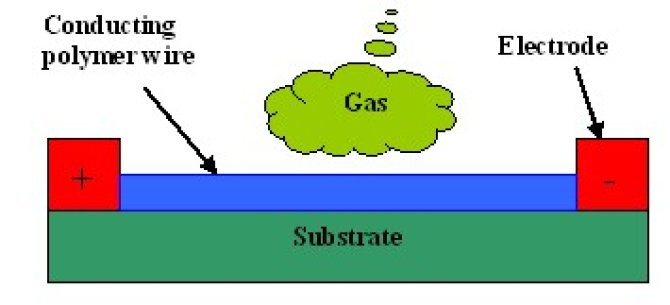
Ammonia / carbon dioxide nanowire sensors for office and greenhouse applications
Introduction:
Nanowire sensors are recognised to be the next generation of ultra-fast chemical sensing systems. The high surface area of the nanowire allows for fast diffusion of gas molecules into the structure. A direct electrical readout is obtained basing on a change in electrical resistance of the nanowire upon adsorption of the target species. The project concentrates on the development and characterisation of suitable conductive polymer materials for selective and sensitive ammonia and carbon dioxide sensing like polyaniline (PAni) and blends of PAni/ polyvinyl alcohol (PVA). They show specific change show specific change in resistance when gases are being adsorbed at low concentrations.
Figure 1 . Configuration of nanowire chemiresistor sensor
Goal:
Fabrication of nanowire gas sensor modules based on conducting polymers/ blends operating at room temperature. These modules are thereafter integrated with read-out electronics to build up a compact, low-power, highly sensitive and selective ammonia / carbon dioxide gas sensor with wireless communication facilities.Fields of interests:
- Conducting polymers/ composties: polymer surfaces/interfaces, structure-property relationships,
- Nanowire synthesis techniques and nanoscale assembly/characterization of matter,
- Micro- and nano-scale fabrication,
- Nanoscale devices: integrated sensor microsystems, nanowire integrated sensors, ultra low-power wireless sensors.